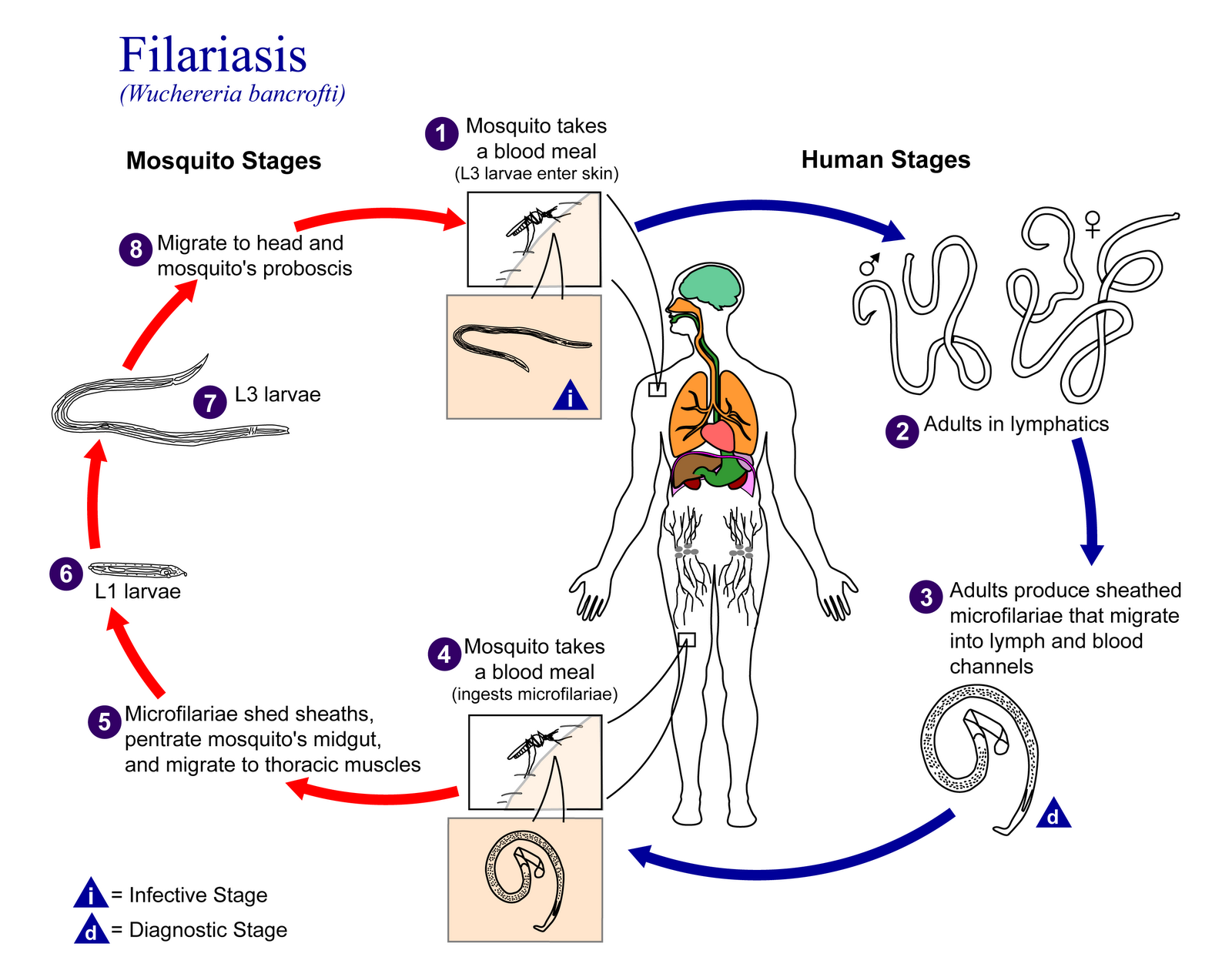Today in my Animal Physiology
class, I saw a picture of a person who had severe swelling of the feet. I was
shocked and intrigued at the same time, so I decided to do a little
investigation about a disease called elephantiasis. The disease also known as
lymphatic filariasis affects over 90 million people in the world, particularly
in the tropical and subtropical parts of the world. The disease is
characterized by edema with thickening tissues, especially in the legs, arms, and
the genitals.
The disease is transmitted by
Filarial worms that are ingested by arthropod vectors like mosquitoes, which
would then be transmitted to humans when they bite humans for blood. The
infection causes a great inflammatory immune response, which results in the development
of symptomatic lymphatic obstruction. The larvae of the Filarial worms migrate towards the lymphatic vessels where they would develop to adult worms. The full mechanism of this disease is
still not completely understood. However, it is known that there is an increase
in the levels of IgE and IgG4. In addition, people who are infected with this
disease have been found to have an impaired lymphocyte proliferation response
to the Filarial worms and have defects in the antigen-presenting cells function.
Studies have found that genetic polymorphism in the parasite and/or host may
influence the susceptibility to the infection.
Unfortunately, there is currently
no vaccine that is available for this disease. People who live in areas that
are at risk of the disease would be given two drugs annually – albendazole with
invermectin or with diethylcarbamazine citrate – to prevent the spread of the
infection. Although the disease is rarely fatal, it is important to treat the
disease early to prevent severe disability.
Works Cited
King,
C.L. Transmission intensity and human immune responses to lymphatic filariasis.
Parasite Immunology 2001; 23.
Wayangankar, S. [Internet] Filariasis; 2013 [Cited 2014 April 4]. Available from: http://emedicine.medscape.com/article/217776-overview#a0156
World
Health Organization [Internet]. WHO; 2014 [Cited 2014 April 4]. Available from: http://www.who.int/mediacentre/factsheets/fs102/en/


No comments:
Post a Comment